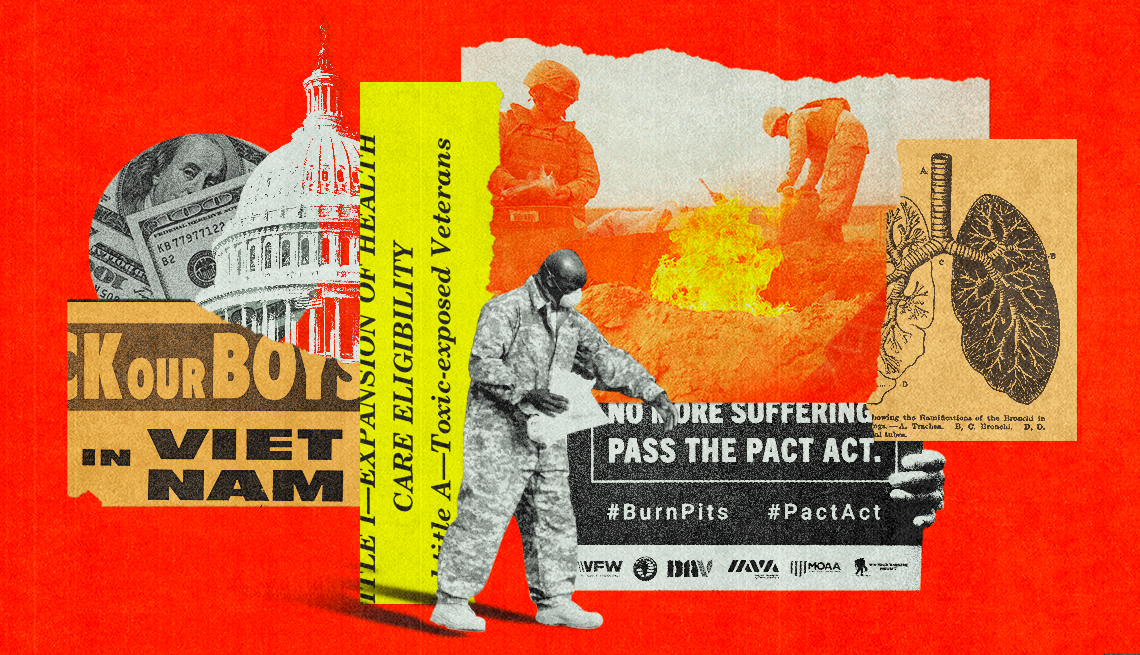Staying Fit
When Mark Jackson went running at Bagram Air Base in Afghanistan, he would taste plastic and jet fuel in his mouth from a burn pit the size of two football fields, where toxic military refuse was incinerated 24/7, showering ash down on soldiers’ tents and skin.


You can subscribe here to AARP Veteran Report, a free e-newsletter published every two weeks. If you have feedback or a story idea then please contact us here.
“The smoke would burn so thick sometimes that you couldn’t see one side of the valley,” the Army veteran, who served four combat tours, told AARP Veteran Report. He is now board chair of the Stronghold Freedom Foundation, which helps post-9/11 veterans.
Exposure to toxins from burn pits, radiation and other hazards, from the Vietnam era to the wars in Afghanistan and Iraq, has led to millions of Department of Veterans Affairs (VA) claims for service-related injuries. Around 70 percent of the claims were denied, until now.
The Honoring Our Promise to Address Comprehensive Toxics (PACT) Act is named after Sgt. 1st Class Heath Robinson, a medic who died from a rare form of lung cancer. It expands coverage to some 5 million veterans.


AARP Membership— $12 for your first year when you sign up for Automatic Renewal
Get instant access to members-only products and hundreds of discounts, a free second membership, and a subscription to AARP the Magazine.
Here is how to access benefits.
1. Check your eligibility at va.gov/pact
More than 20 conditions are now given presumptive status, meaning veterans are eligible for care without proving their disease was service-related, which should cut paperwork and wait times. The list includes 11 respiratory conditions and several forms of cancer.
Vietnam veterans exposed to Agent Orange have two new presumptive conditions: high blood pressure and monoclonal gammopathy of undetermined significance. Veterans who served at an additional five locations are now assumed to have been exposed to Agent Orange if they were at those locations during specified periods.
Post-9/11 exposure sites include Afghanistan, Djibouti, Egypt, Jordan, Lebanon, Syria, Uzbekistan and Yemen. Gulf War veterans are also covered. Gulf War and post-9/11-era sites include Bahrain, Iraq, Kuwait, Oman, Qatar, Saudi Arabia, Somalia and the UAE. Being in airspace above these countries also counts.
2. Apply again
Veterans who were previously denied but think they may now qualify are urged to file a supplemental claim. Post-9/11 veterans will be able to apply for VA care for up to 10 years after their service ended, extending the end of service period from five years. If you were discharged or released before Oct. 1, 2013, you may still be eligible during a one-year enrollment period that starts Oct. 1, 2022.





































































